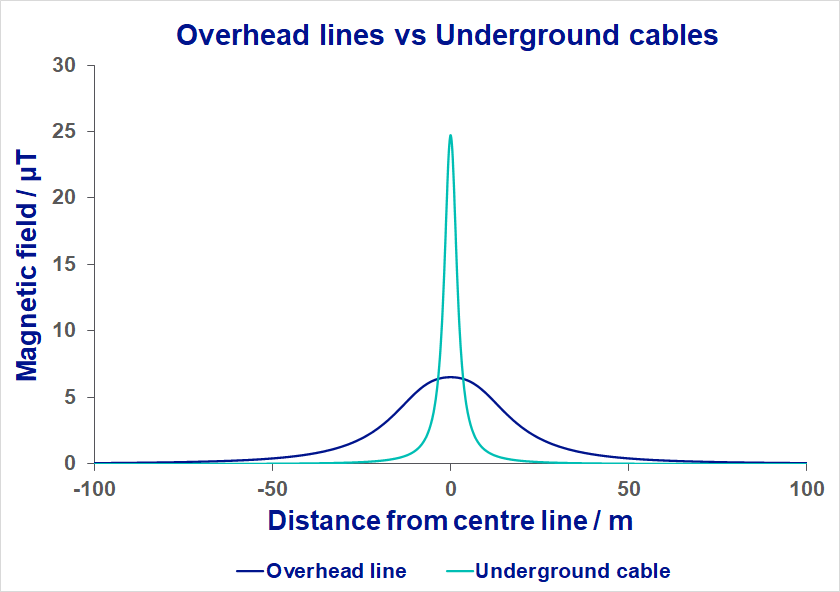Underground transmission cables
Large underground electricity cables will have a unique design each time they are installed, unlike overhead lines that will use common design elements such as standard types of pylons.
When new large underground transmission cables are built, they will need to be specifically designed to comply with the UK exposure guidelines for EMFs.
For underground transmission cables, the individual conductors can be closer together compared with overhead lines, where the conductors are far apart for safety reasons. This leads to greater cancellation of the magnetic field. Underground cables can generally be approached more closely than an overhead line as they are buried a few metres underground, which leads to higher fields at ground level compared with overhead lines. Overall, ground-level magnetic fields from underground cables fall much more rapidly with distance than those from a corresponding overhead line but can be higher than overhead lines when close to the cable. The graph opposite shows the comparison between the magnetic fields of a 400kV underground cable and an equivalent overhead line.

Because underground cables are not built to a standard design like overhead lines, the magnetic field from every cable will be different. Cables can also be installed in different ways which will change the magnetic field that is produced at ground level.
Cables in tunnels
Occasionally, instead of being buried directly in the ground, an underground cable is placed in a tunnel which can be ten or more metres below ground. For these cable tunnels the cables cannot be approached closely by members of the public and the magnetic field at the ground level is much lower than an equivalent overhead line and often lower than background fields from other sources.
Cables with multiple conductors
Often underground cables have two circuits (matching the two circuits of an overhead line) laid in the ground close together, and sometimes each circuit needs two or more groups of conductors. This can lead to multiple peaks of magnetic field, but the current is split between the conductors in each circuit, reducing the peaks. As with other underground cables the maximum field will always be designed to comply with the EMF exposure guidelines.